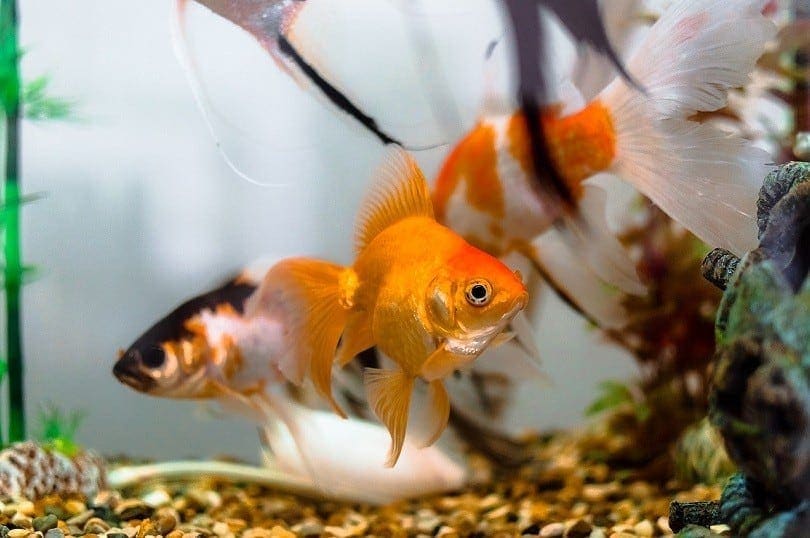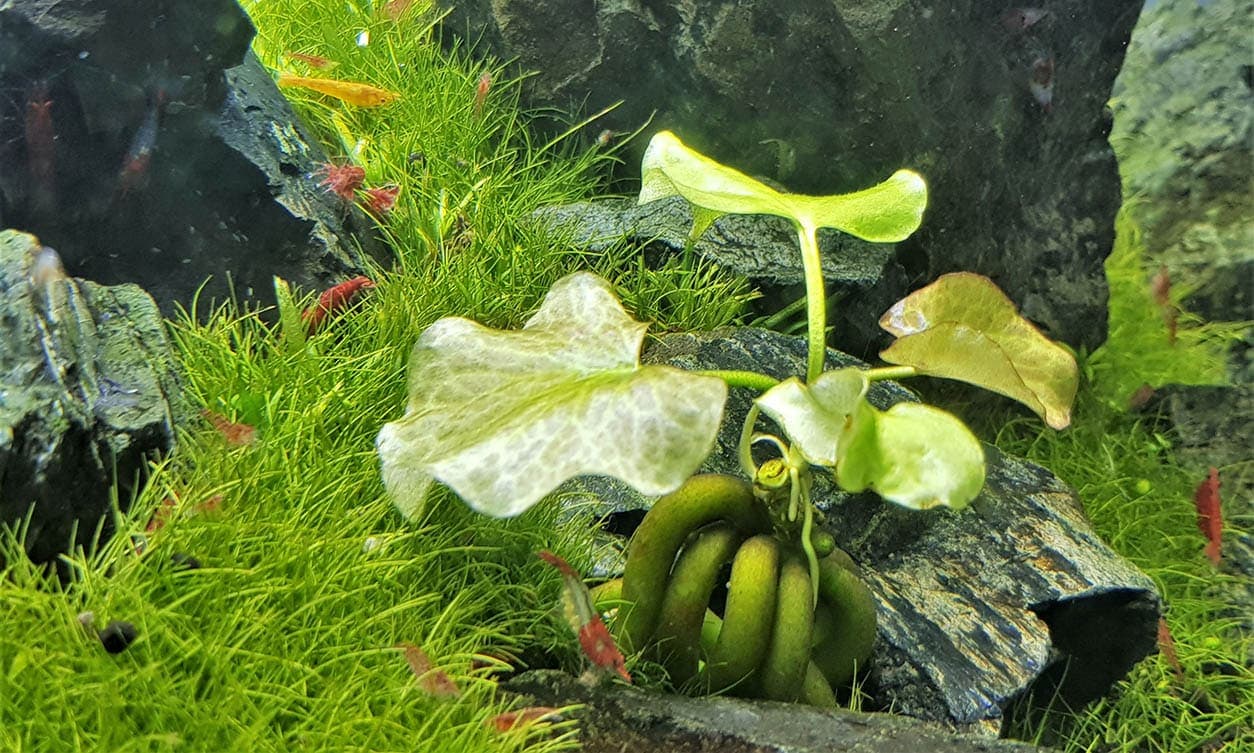Freshwater Aquarium Sand vs. Gravel: Which to Choose

Updated on
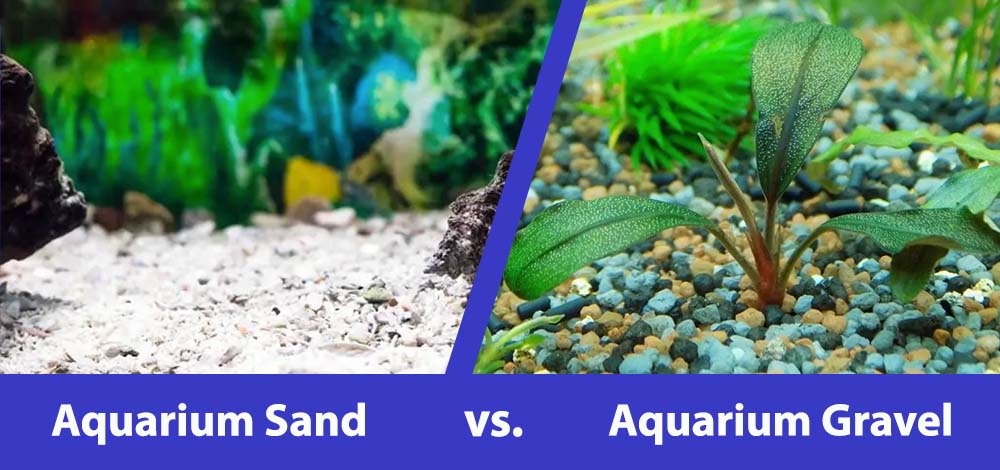
Sure, you could go for a bare-bottom tank, but that won’t be fun for your fish or your plants. Plus, it just doesn’t look as nice. The two most common types of freshwater aquarium substrates are sand and gravel. But which is better and why?
There are some major differences between the two to think about with sand and gravel, which is why we are going to engage in this freshwater aquarium sand versus gravel debate to help you decide which type of substrate is right for you.
Aquarium Sand Summary
Sand substrate is always an option to go with for an aquarium. It certainly looks nice, and it provides for a natural look. Sand can be found in any pet store or aquarium shop, it comes in large bags, and does not cost very much either.
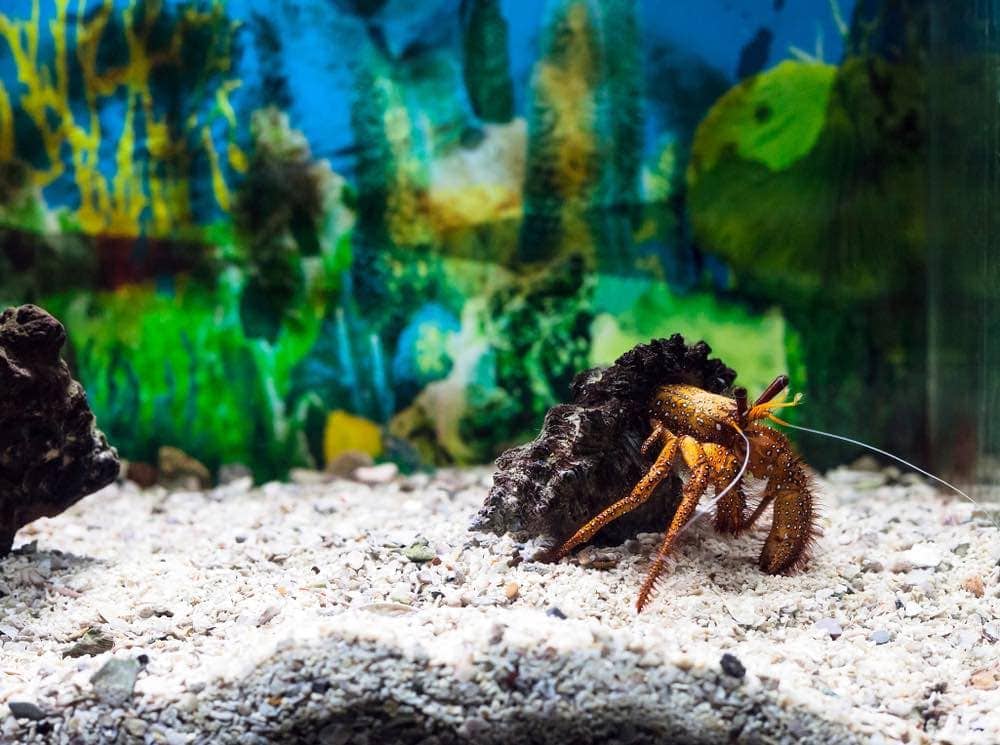
Some aquarium sands are specially designed for fish and animals that like to burrow and dig. There are also some types of sand which are specially made for rooted aquarium plants that require a lot of nutrients.
It’s an easy-to-use substrate and one that does come with some benefits but may also have some drawbacks as well. So, is sand better than gravel? Let’s look at the pros and cons.
- Cheap and readily available
- Easy to clean
- Allows fish to burrow
- Provides a natural look for the tank
- Can create anaerobic dead zones
- Doesn’t support plants with heavy root growth
- Can create a messy tank
NOTE: If you need some good sand suggestions, here are our top 5.
Benefits of Using Aquarium Sand
Sand substrate is cheap to purchase and is readily available in most fish, aquarium, and pet shops. Another big benefit that you get with sand substrate is that there are some plants which love putting their roots in sand. It does depend on the plant, but if you have plants that don’t have the best root system, sand can provide for a stable base, and there are some kinds of sand out there which come enriched with nutrients to feed these plants (we have covered give good plants for sand on a separate article, you can find it here).
The next benefit that comes with using sand substrate is that waste, plant matter, and uneaten food will settle on top of the sand and will usually sit there without being absorbed or sucked down into the sand. In other words, in some cases, it can help make your fish tank much easier to clean in terms of waste disposal.
The other benefit that you get with sand is that it allows fish, snails, and crabs, as well as other animals, to burrow down into it. Yes, there are some aquarium creatures that love to burrow down into the sand, which could be for a number of reasons.
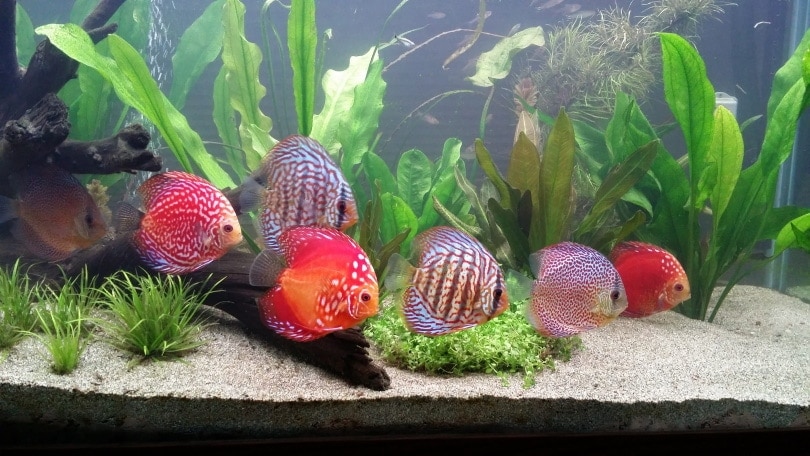
Drawbacks of Using Aquarium Sand
We know that we said that sand substrate is good for some plants, but this is really only the case if you get sand that is specially designed for aquatic plant life. With that being said, many kinds of sand are too compact for heavy root growth, and common sands don’t come enriched with the nutrients which these plants need to grow.
There is also the fact that sand can be very messy (and it needs time to settle properly). Yes, waste sits on top of it, which is nice, but when it comes down to it, the sand can get sucked into filters, clog up tubes, and it can get stirred around by fish. In other words, sand can make quite the mess, especially if you have strong pumps and filters or very active fish.
One of the biggest drawbacks of sand substrate is that it can create so-called anaerobic dead zones. This is when there are no creatures which stir up, burrow, and mix the sand around. This can create pockets of anoxic zones, otherwise known as anaerobic dead zones. These are pockets of gasses, and when disturbed, they can either harm or kill both fish and plants. If you have sand that is not regularly stirred and moved, this is an issue that will most likely occur.
Aquarium Gravel Summary
When it comes down to it, gravel substrate is usually the go to choice here. On a side note, gravel can come in many different shapes, sizes, and colors (here are our five favorite color options). Of course, which color you get is up to you, as it really depends on the look and environment you are going for.
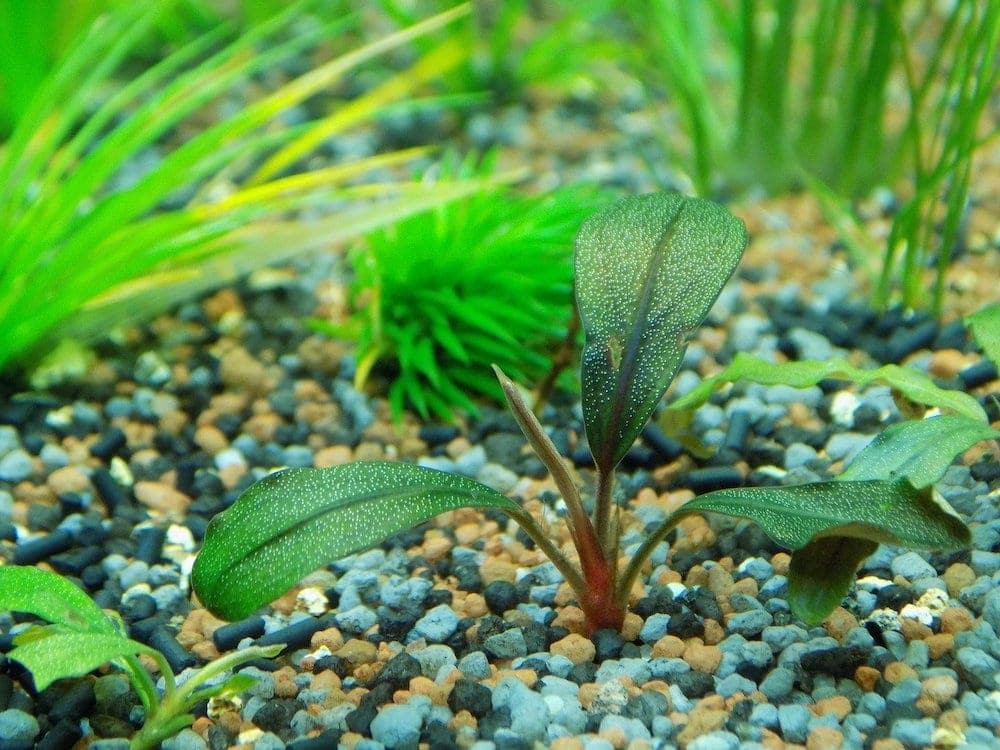
However, in terms of shape and size, we would recommend going with pea sized gravel that is fairly smooth. Pea size tends to the best in terms of cleaning, waste disposal, for fish health, and plants as well.
You do want the gravel to be smooth, especially if you have fish that like to reside at the bottom, in order to avoid cuts, scrapes, and other injuries. Gravel tends to be the more versatile option. Let’s now go over both the pros and cons of gravel.
- Cheap and readily available
- Better for planted tanks
- Does not affect water chemistry
- Works well with most filtration types
- Fish can eat gravel and become sick
- Fish cannot burrow into it
- Hard to clean
Benefits of Using Aquarium Gravel
Like sand, gravel substrate is quite cheap and easy to find in any pet or aquarium shop. It is very easy to come by.
In terms of planted tanks, plants will usually always do better in gravel than in sand. The small spaces between the rocks, as well as the rocks themselves, provide a great place for plants to set their roots and to allow for big root networks to develop fairly quickly.
Something else that you may not know about most gravel is that it is inert. This means that most kinds of gravel substrate will not adversely affect water chemistry within the tank.
Gravel is usually large and heavy enough so that fish, air pumps, water pumps, and filters won’t be able to stir it up. Simply put, it’s too heavy to float around like sand does, and therefore does not result in such a mess or clogged aquarium components, or cloudy water for that matter.
The gravel itself is usually quite easy to clean. You can simply scoop it out of the water and rinse it under water in order to get it brand new.

Drawbacks of Using Aquarium Gravel
One drawback that you face when using gravel substrate is that uneaten food, fish waste, and other organic matter can easily slip through the cracks between the rocks. This can make cleaning out your aquarium much harder, as you need to use a gravel vacuum to suck up all of that organic matter from between the rocks. It can be a bit difficult at times. At the very least, it can lead to some pretty serious water quality issues.
Some fish just are not that bright, and sometimes they will try to pick at gravel. It can harm their teeth (if they have teeth), it can cause digestion and buoyancy issues, and it simply is not healthy. Have you ever tried eating rocks? Goldfish are known for choking on small pieces of aquarium gravel.
There are some fish species which like to burrow in substrate, in which case gravel is not the best because rough gravel can injure fish. Moreover, gravel can contain bacteria, and when a fish gets scratched, those bacteria can cause infections and illness.
 Considerations to Keep in Mind
Considerations to Keep in Mind
So, before you go out an decide on either sand and gravel, just keep these main considerations in mind.
Fish Preferences
If you have fish and other animals that like to mess with and burrow in the substrate, you are probably better off going with sand, rather than gravel, as gravel can cause issues here.
Planted Tanks
If you have a planted tank, or in other words, a fish tank with lots of aquarium plants, you are best off going with gravel. It is better in terms of nutrients and the root system.
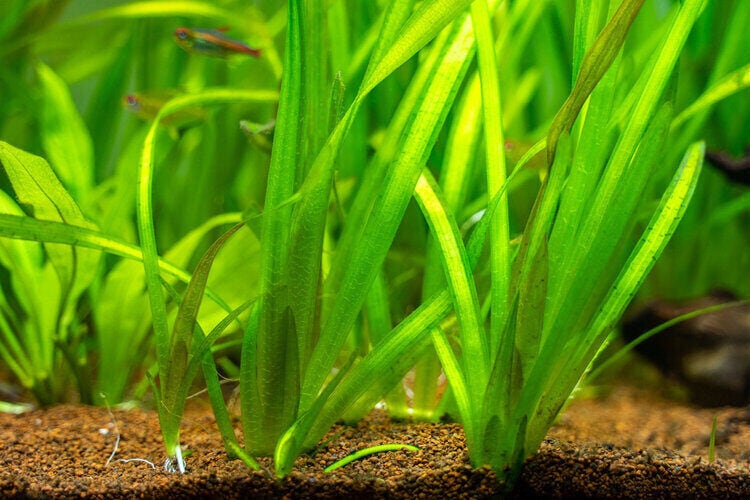
Cleaning & Filtration
This is kind of a double-edged sword. On one hand, sand is better because waste does not sink down into it and get stuck in it, thus making waste easier to clean.
However, on the other hand, sand can get stirred up, cause a mess, and get sucked into filters. Also, by itself, you can actually wash gravel under your kitchen sink, something you definitely cannot do with sand.
Substrate Replacement
If you are using sand, you will need to replace it every now and again, and this can be quite the process. Gravel never really needs to be replaced, as it can usually just be washed.
Water Chemistry
In terms of water chemistry, as long as you have inert sand or gravel, both are fine. Just make sure you don’t get sand or gravel that can cause nitrate, ammonia, or pH spikes.
Final Thoughts
There you have it folks! You should now have all of the information you need to settle the sand vs gravel substrate debate once and for all.
Just keep all of the main considerations and factors in mind which we talked about here today, and you should have no trouble choosing the type of substrate best for you and your aquarium inhabitants.
See also:


